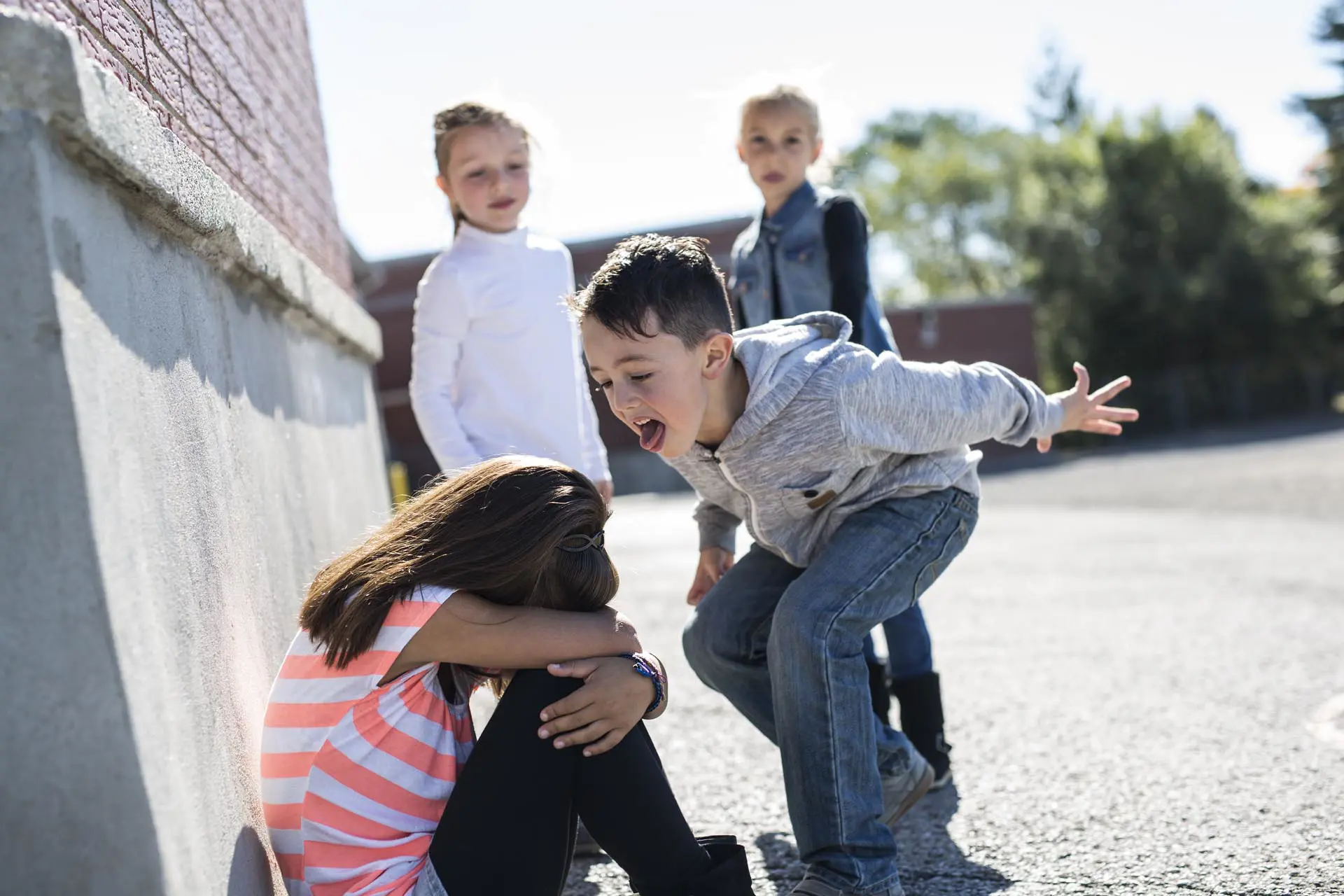Social Skills: Bullying A guide for the rest of us.
For those of you who missed my first post about teaching/learning social skills and want to learn more, this is my second post on this topic and it revolves around the social skills topic of handling bullying. It probably hasn’t escaped you that I’m going against the grain on this one, so I’ll fill you in.
When I was young, I was badly bullied. Simply put, I lacked some basic social skills that the kids picked up on and I didn’t know how to manage the teasing that grew out of it. As a middle schooler, I was shocked and hurt, and I suffered miserably for three years.
What was I bad at? I guess everything. For instance, when a girl in the bathroom told me she got her period, I replied, “oh, like at the end of a sentence.” That actually happened. I dressed to suit myself in hot pink Osh’Kosh B’Gosh overalls, and buttoned my shirt buttons to the top every day. On multiple occasions, kids would pass me in the hallway, stop, and unbutton that top button. I responded to the bullying by turning red in the face, tearing up, and getting defensive. This is exactly what the bullies hoped for, and it got pretty ugly.
How did it end? Badly. A group of bullies cornered me as I was leaving for the bus and I couldn’t get away. As one of the girls got in my face, I punched her in the nose and mouth as hard as I could and then ran for my life to the principal’s office. No one ever bullied me again.
I don’t want your child to go to those lengths (and in today’s day and age, they’d get in more trouble than their bullies) and I don’t want them to be bullied or feel that low self-esteem and sense of self-worth that comes with long-term bullying.
So what to do?
PEERS through UCLA has an answer. The program itself is a touch ableist, but IRL Social Skills takes away those few ableist parts, replacing them with effective language. This is not an advertisement for IRL Social Skills (though I love their founder, Mara McLoughlin), but is instead an example of an organization that has gone to lengths in order to ensure quality social skills education that does not focus on curing autism or adhd.
The Consequences of Bullying
Children who are bullied experience increased rates of depression and anxiety as well as feelings of loneliness and sadness. They may struggle with sleeping or have changes in their eating patterns. Some even lose interest in activities that they previously enjoyed. These feelings can persist into adulthood.
The standard thing that parents and teachers often advise children being bullied is to “Ignore it.” That, obviously, just fans the flames of the fire and makes things worse.
What your child needs to do is face the bullying head on. (If you, as an adult are being bullied, pay attention to these videos too!)
UCLA Peers teaches a few ways to do this. Two are shown here:
Sound Bored
Yes. Pretend that the words the bully is saying are completely boring. Watch Gabe handle some teasing and then we’ll talk about it.
So how did Gabe manage it? He didn’t look upset or bothered, but instead disinterested. He effectively used “whatever” and “anyway” to convey his lack of interest. Ultimately, the coup de grace involves Gabe simply closing his book and walking away. This is a pretty skillful move, and will take practice with parents to perfect.
Have an Attitude
Having an attitude is a level-up skill. It requires a little more understanding for one’s facial expressions, tone of voice, and body lanuage.
Look at Elina go! Skillful uses of “Whatever” and “Anyway” got her through this interaction, and it is a tough one. Who wouldn’t have crumbled at the insults? It’s tough to keep your composure during an interaction like this. Again, parents need to practice with your kids. If you’re an adult though, looking for a way to stop some work place bullying, for example, this will work for you too.
Copping an attitude is a pretty difficult thing to do right. It has to be enough to ward off the bullies, but not so much that it garners more teasing or makes you or your child look like an aggressor. Sticking to the tried and true “Whatever,” “Is that supposed to be funny,” and “Whatever” with an exit stage right are the most calm, cool, and collected ways to make this happen. Notice the look on Elina’s face though. A furrowed brow and facial expressions suggesting the bully does not make sense and the not-so-dramatic dirty look and walk off screen sent the message, “I don’t care about this.”
That is the attitude your child should embrace. I don’t care. This is so boring to me.
Words of Caution
These tactics take some time. Although we might hope for immediate results, the bully is likely to stick around awhile trying to poke the bear, so to speak. It wouldn’t be unheard of for the bully to follow (you) your child the first few times they walk away. The best thing you can do to help yourself or your child, is to practice these facial expressions in front of a mirror. Make practice videos at home like the ones that I just showed you and help your child practice facial expressions, saying the words, and walking away repeatedly. Record it, video it, take turns playing the aggressor and victim. Use the scenarios you or your child are experiencing to make it relevant.
Report back. I want to know how it goes!
